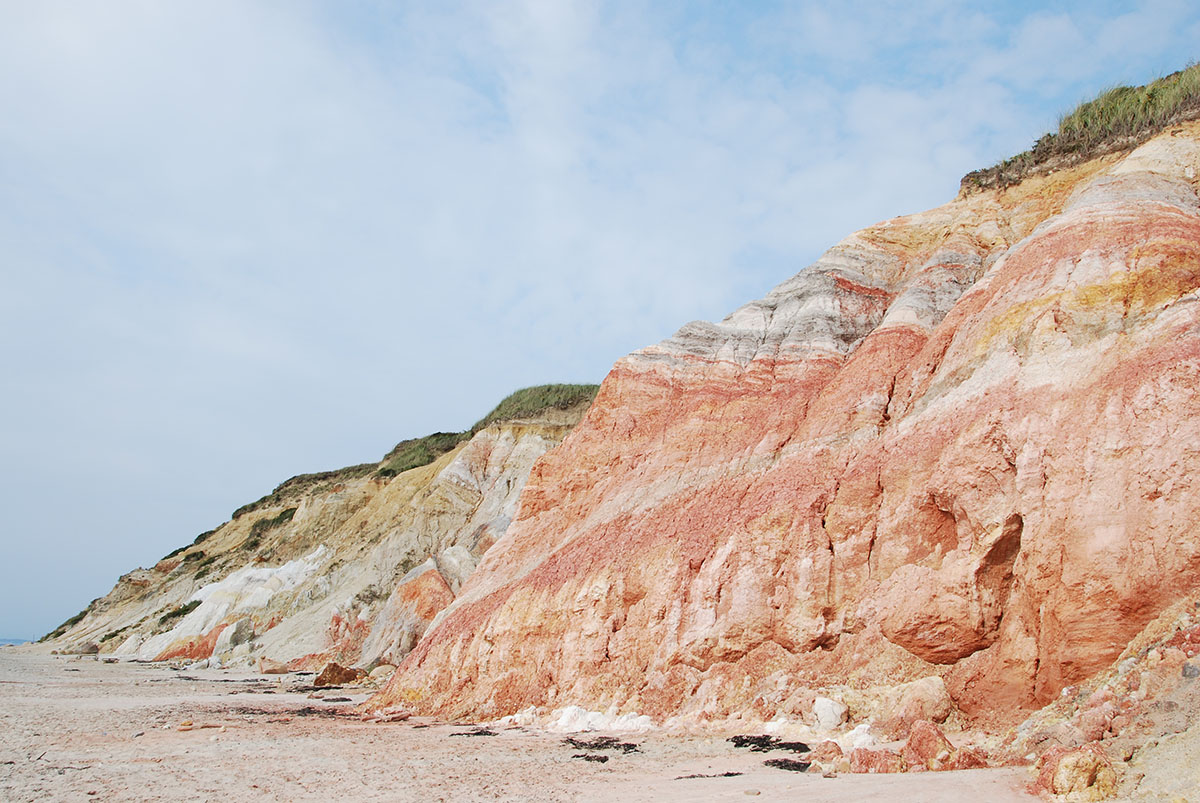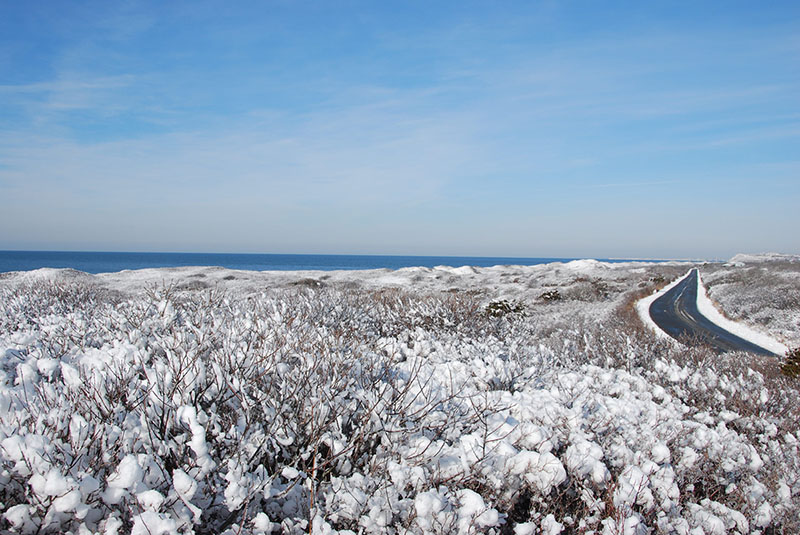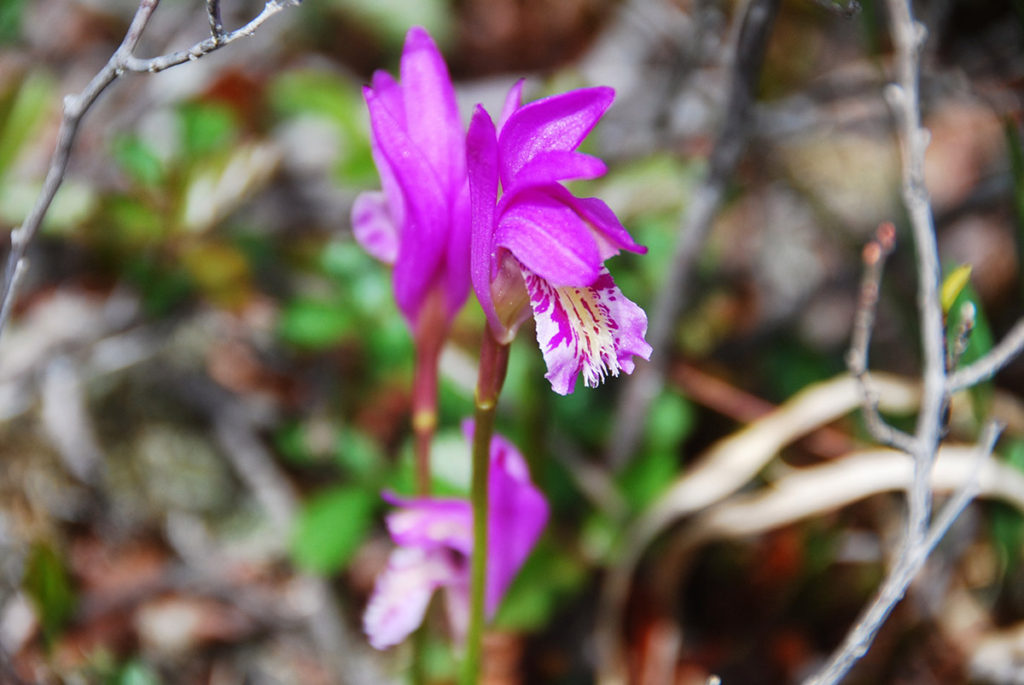
Land Protection
Caring for our Island Home
From rare heathlands to woodlands, farm fields to footpaths, the Vineyard Conservation Society has protected the diverse habitats and scenic beauty of Martha’s Vineyard for nearly sixty years.
Martha’s Vineyard is blessed with some of the Earth’s most uncommon, and ecologically significant, landscapes, including sandplain grasslands to the south and east, and highly threatened coastal heathlands on the western moraine. In fact, more than 90% of the Northeast’s coastal heathlands – home to a rich, but fragile, ecological community – have vanished due to human impacts.
Our little island is one of the few places where these heathlands have survived, due in no small measure to the diligence of VCS. Thriving within the windswept moors near Moshup Trail in Aquinnah, bearberry, huckleberry, and highbush blueberry coexist in the harsh conditions with rare species like the shocking pink Dragon’s mouth orchid (Arethusa bulbosa). Harrier hawks nest nearby, spotted turtles seek out shrubby swamps and vernal pools, and a diversity of tiger beetles and other invertebrates find refuge and breeding habitat among the maritime shrubs and stunted coastal oaks.


The focus of our ongoing heathland protection efforts is the Moshup Trail Sanctuary project, a decades-long campaign of advocacy and legal defense to secure critical conservation land. At the opposite end of the island, the Great Plains of Katama, with its vast, flat stretches of sandplain grassland habitat, testifies to past VCS protection successes.
Threats & Vulnerabilities: The Great Green Illusion
Martha’s Vineyard is currently undergoing a period of extremely rapid growth and development, largely driven by an explosive market for summer homes and short-term rentals. Yet it remains known for its rural character, retaining far more natural open space than commonly found elsewhere in the Northeast. In explaining this seeming contradiction, an important point to emphasize is that a large portion of the Island’s current open space is not actually protected conservation land. About half is made up of the large number of privately-owned buildable lots that simply haven’t been built upon – yet. We take this open space – the “great green illusion” – for granted at our peril, even more so in today’s real estate market.
Prior to the pandemic-related real estate boom, the Martha’s Vineyard Commission projected that 80% of buildable open space would be lost to development. (And surely that ratio will be even higher today without significant intervention.) Those growth projections also called for a doubling of the population, bringing with it 7,000 new houses and an additional 9,000 guest houses.

Overly rapid growth and development threatens the Island’s natural environment due to the cumulative impacts – especially in the context of global climate change and sea level rise. Each new structure contributes to habitat fragmentation and the loss of open space. More (and larger) houses creates more pressure on infrastructure, more car and jet traffic, more septic systems polluting our fragile coastal ponds, and more contentious development disputes as a growing population negotiates life on a shrinking Island.

